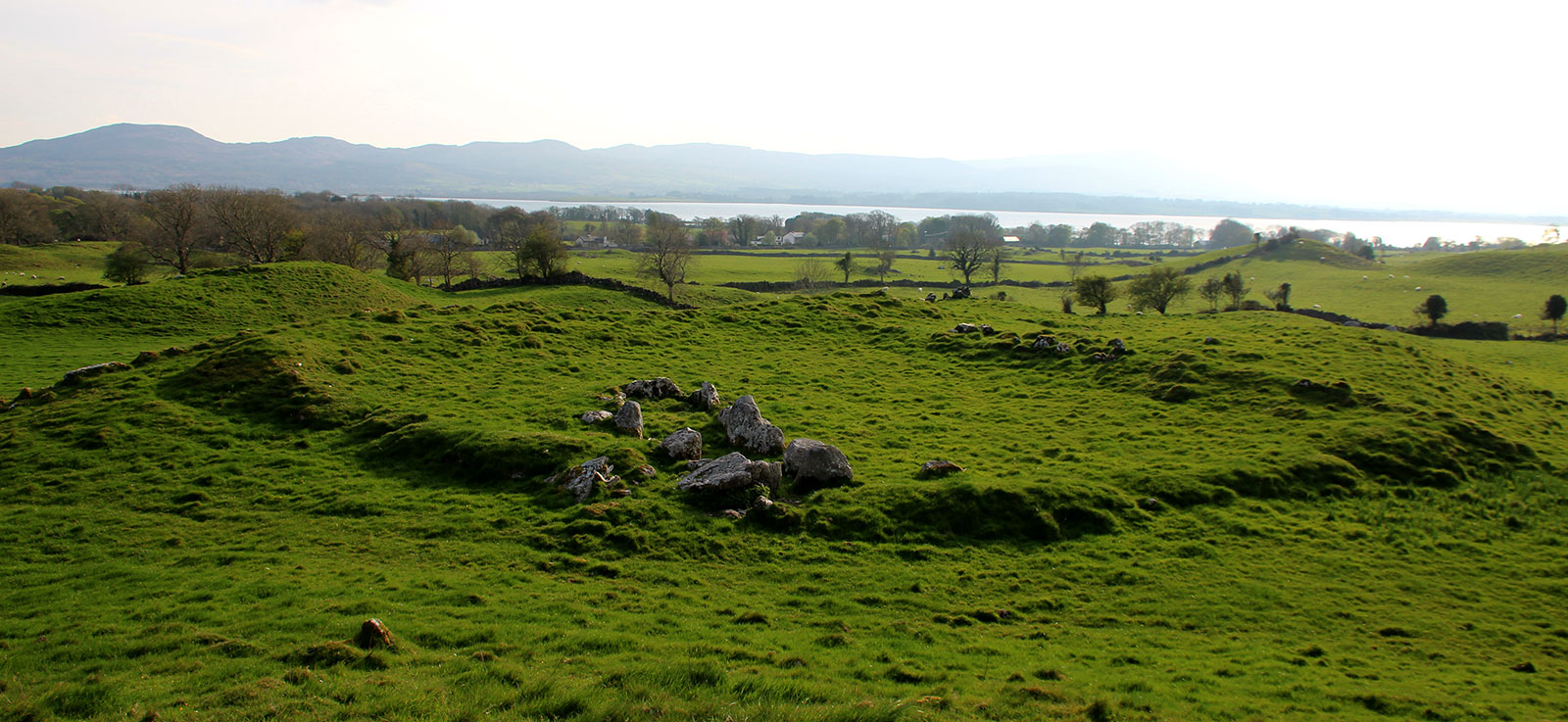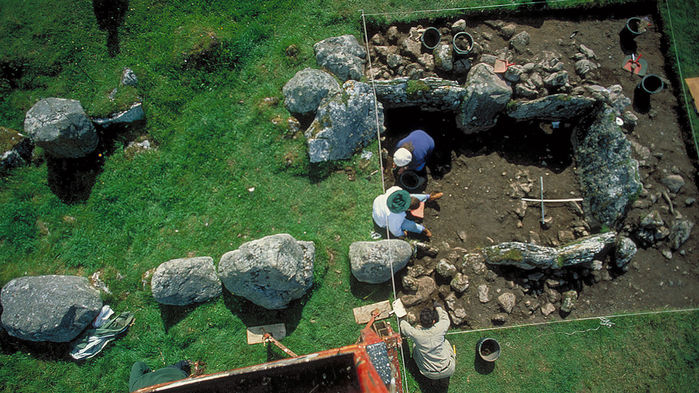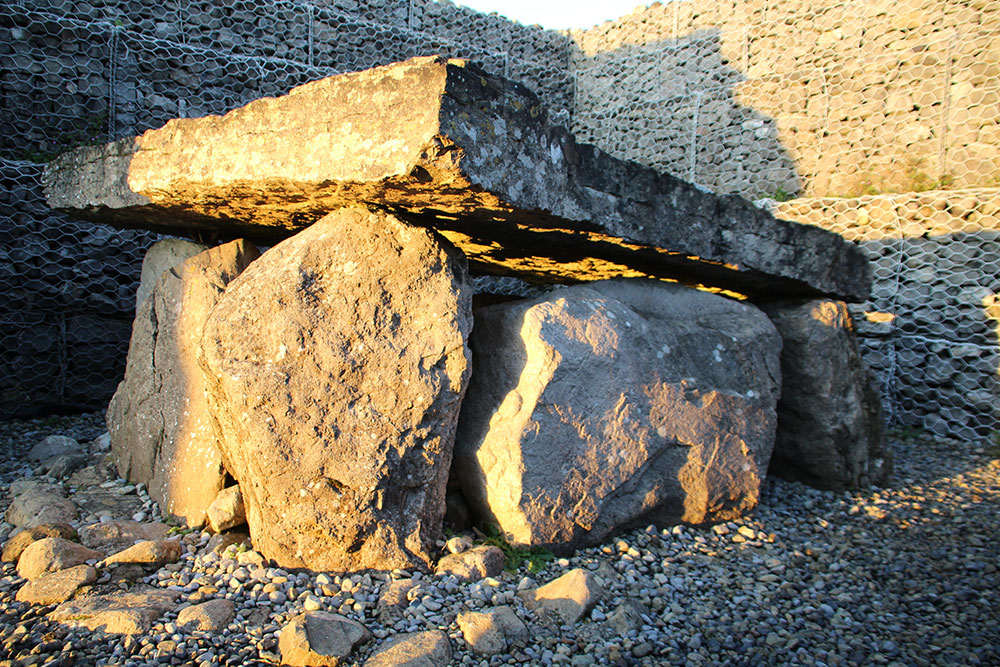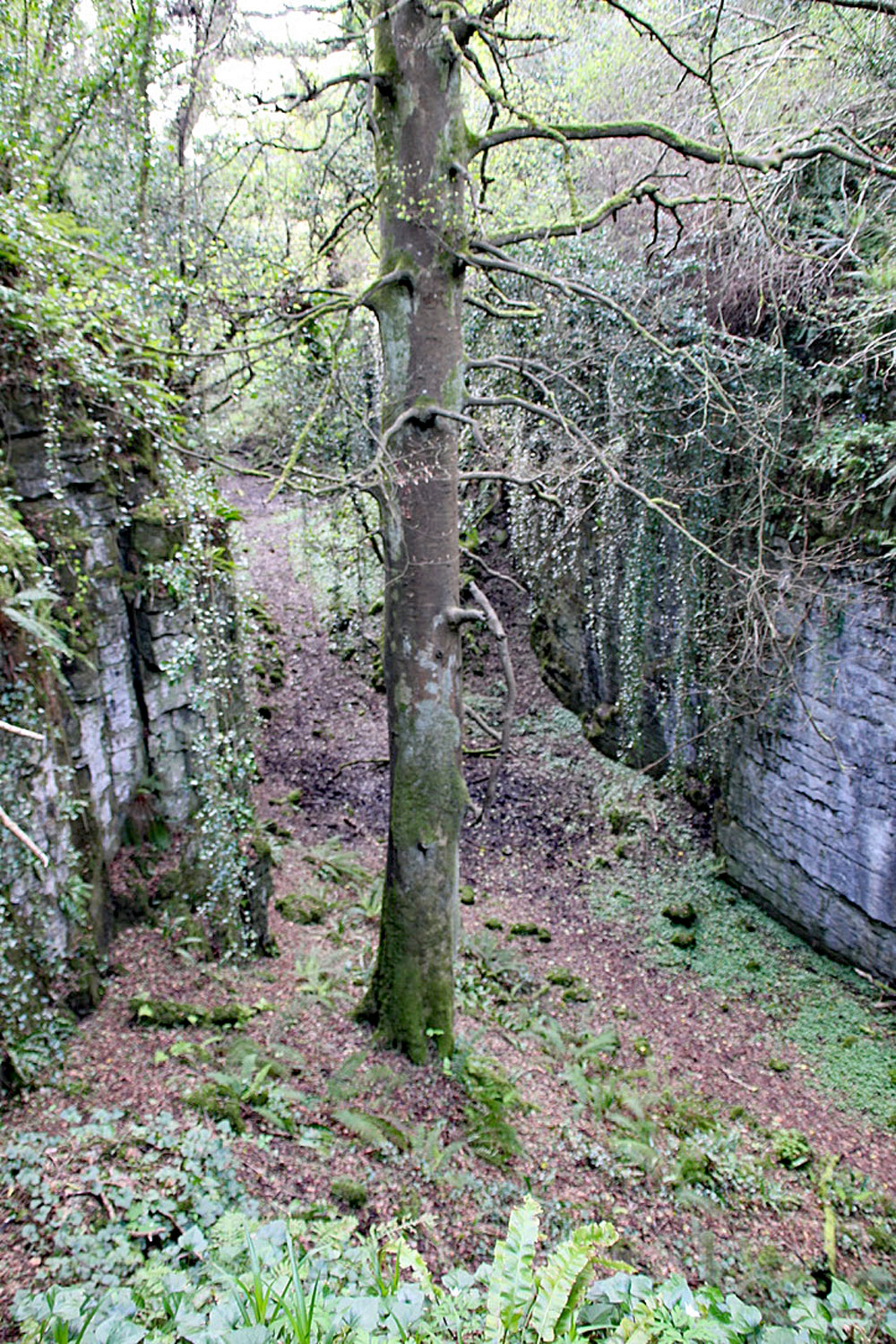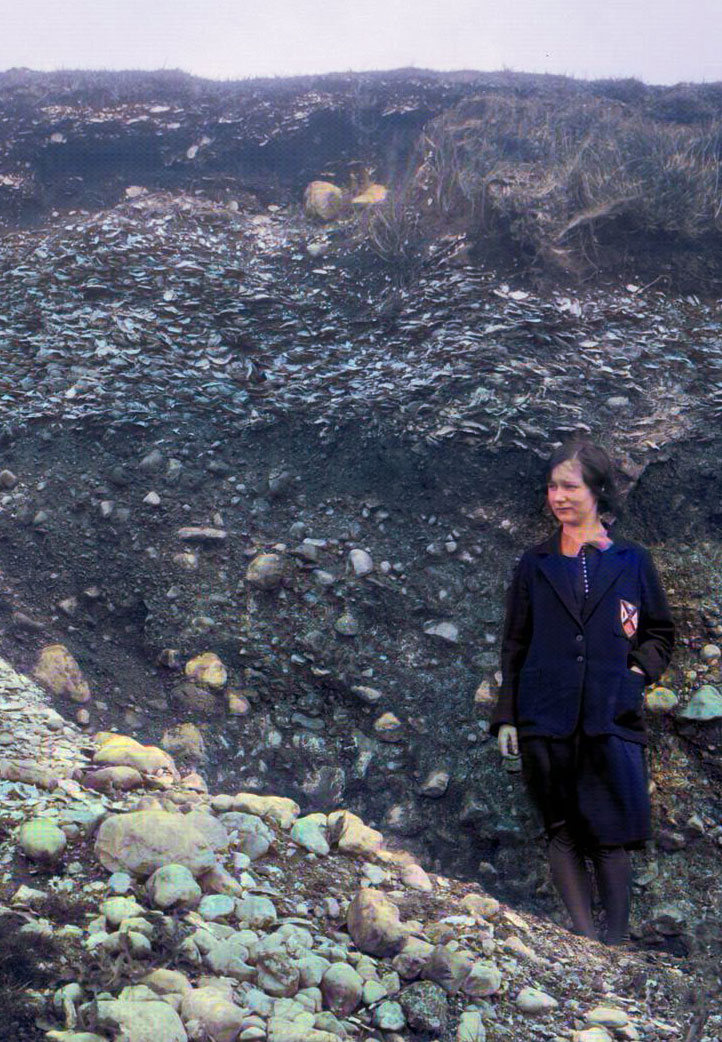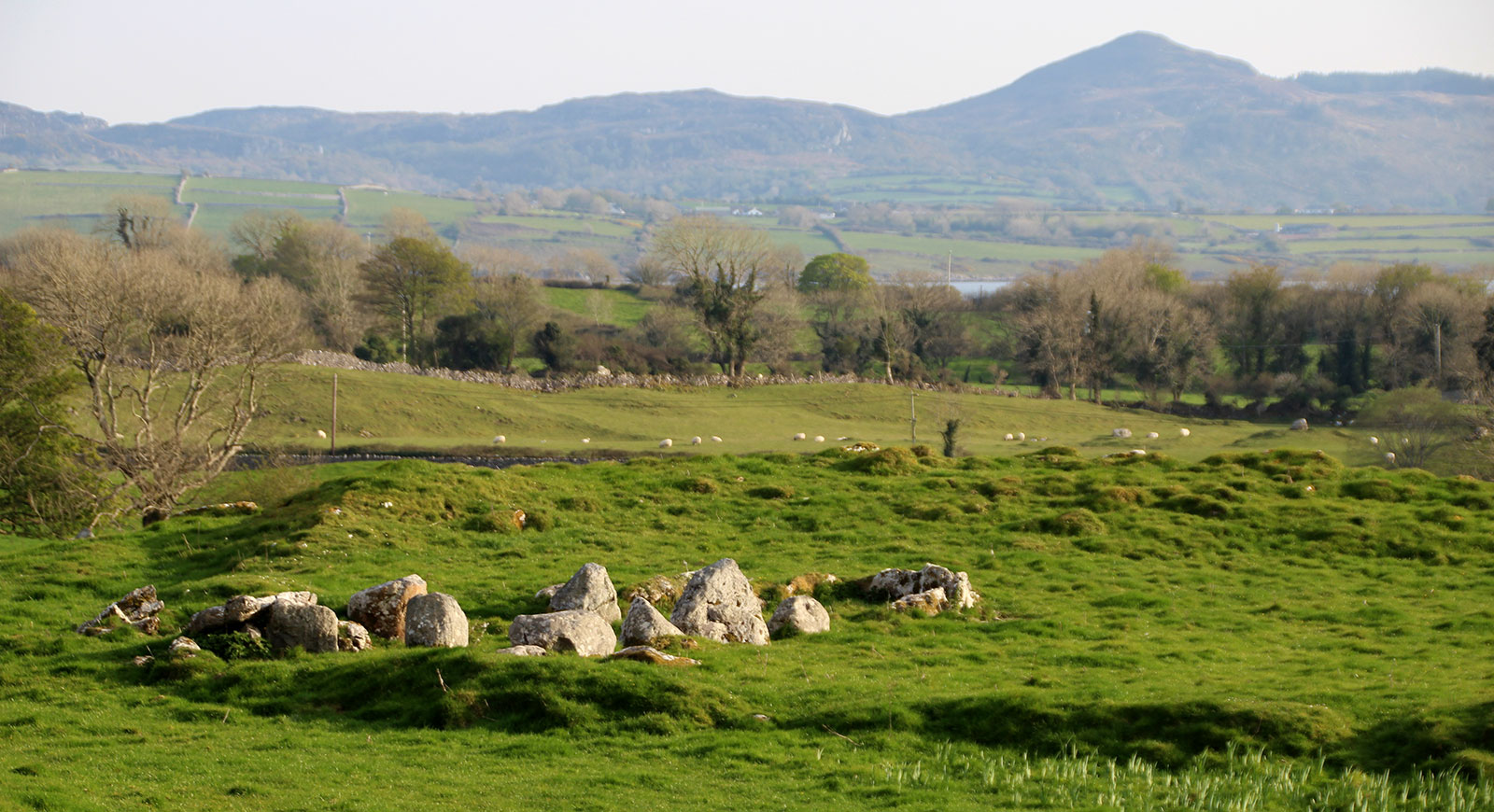Primrose Grange
The megalithic monument at Primrose Grange is situated on the south side of Knocknarea mountain, with wide views across Ballisodare Bay and the Ox Mountains. The mountain-top cairns at Croghaun and Doomore, and the ruined Eochy's cairn at Tanrego mark the site of the First Battle of Moytura in a fascinating article by Henry Morris, published in 1928.
The remains at Primrose Grange consist of the chamber of some kind of a court-tomb, one of three found on the Cuil Iorra peninsula. The monument was excavated by Dr. Göran Burenhult and his team in the late 1990's while they were also working on the sites at Carrowmore, two kilometers to the east of Primrose Grange.
This tomb was excavated between 1996 and 1998 as part of the Swedish Archaeological Excavations campaign at Carrowmore. The excavations have shown that 'that the tomb was in use at the same time as the Carrowmore cemetery. An intact deposition layer inside the chamber, excavated during 1997, has produced a date of around 4000 BC' The tomb has produced large quantities of unburned human bones, as well as stone and bone artefacts. All the burials found in tomb were inhumations. The finds included extraordinary pieces of chert artefacts, mainly leaf-shaped or pointed arrow-heads. (Burenhult 1998)
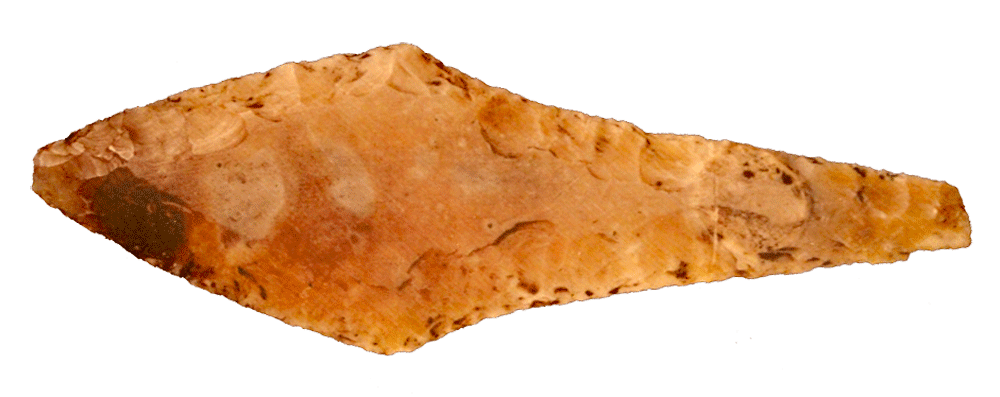
Recent genetic archaeological research using Ancient DNA has discovered a link between individuals buried in Primrose Grange and a man buried in the central chamber of Listoghil at Carrowmore. The huge flat slab which was used as a capstone for the Listoghil dolmen is though to have come from the Glen of Knocknarea, the eastern end of which is just north of the Primrose Grange monument.
Were Europe’s megalithic societies patrilineal?
Article by Michael Price. Printed in Science Magazine, April 15, 2019.
Archaeologists have long been fascinated by the megalithic burial grounds scattered across northern Europe, including those at the most famous site, Stonehenge. But although these stone monuments have yielded scores of ancient remains, they aren’t good at giving up another secret: how the people buried there were related. Now, a controversial study using new DNA sequencing technology has revealed that, in at least four sites in Ireland, Scotland, and Sweden, the interred men were closely related, suggesting to some a patrilineal society.
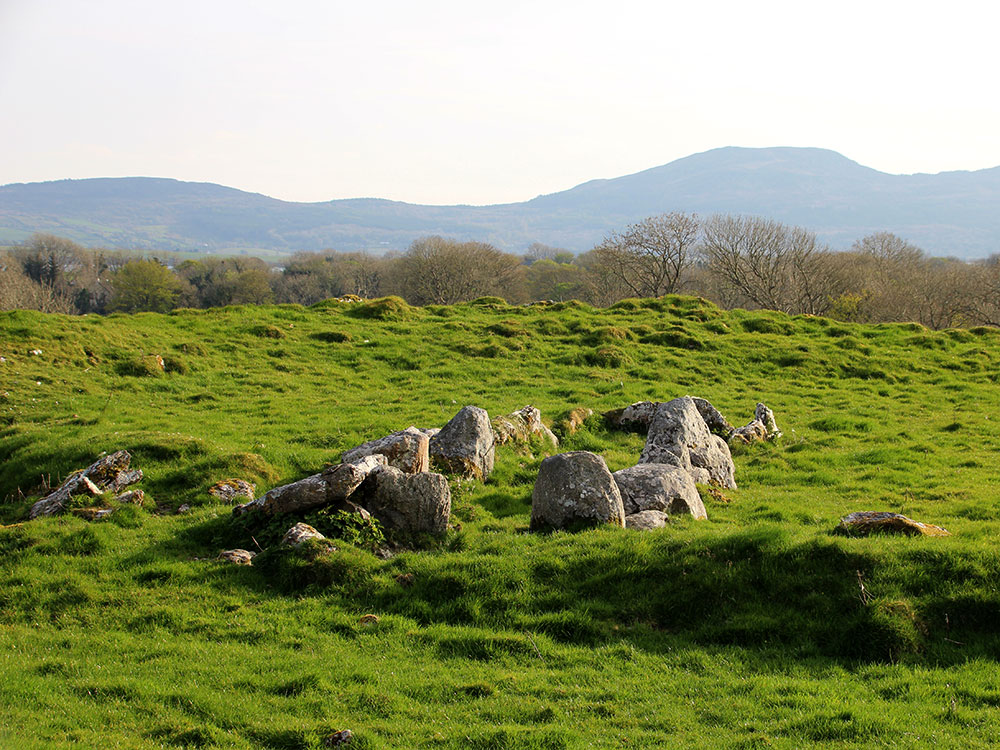
“It is without any doubt an interesting paper,” says Bettina Schulz Paulsson, a prehistoric archaeologist at the University of Gothenburg in Sweden who specializes in megalith origins. But, she adds, the numbers of sites and bodies “are far too little” to know the social structures of these early communities.
For decades, archaeologists have exhumed ancient remains at megalithic sites, from Carnac in the Brittany region of France to Sweden’s Ale’s Stones. In recent years, researchers have managed to coax mitochondrial DNA from some skeletons, revealing links down the female line that shed light—not on familial relations—but on early migration patterns. (Mitochondrial DNA is passed only from mothers to their children.) Recent improvements to DNA sequencing technology and statistical and collection methods have made it possible to sequence ancient nuclear DNA, which can also reveal relationships between male relations.
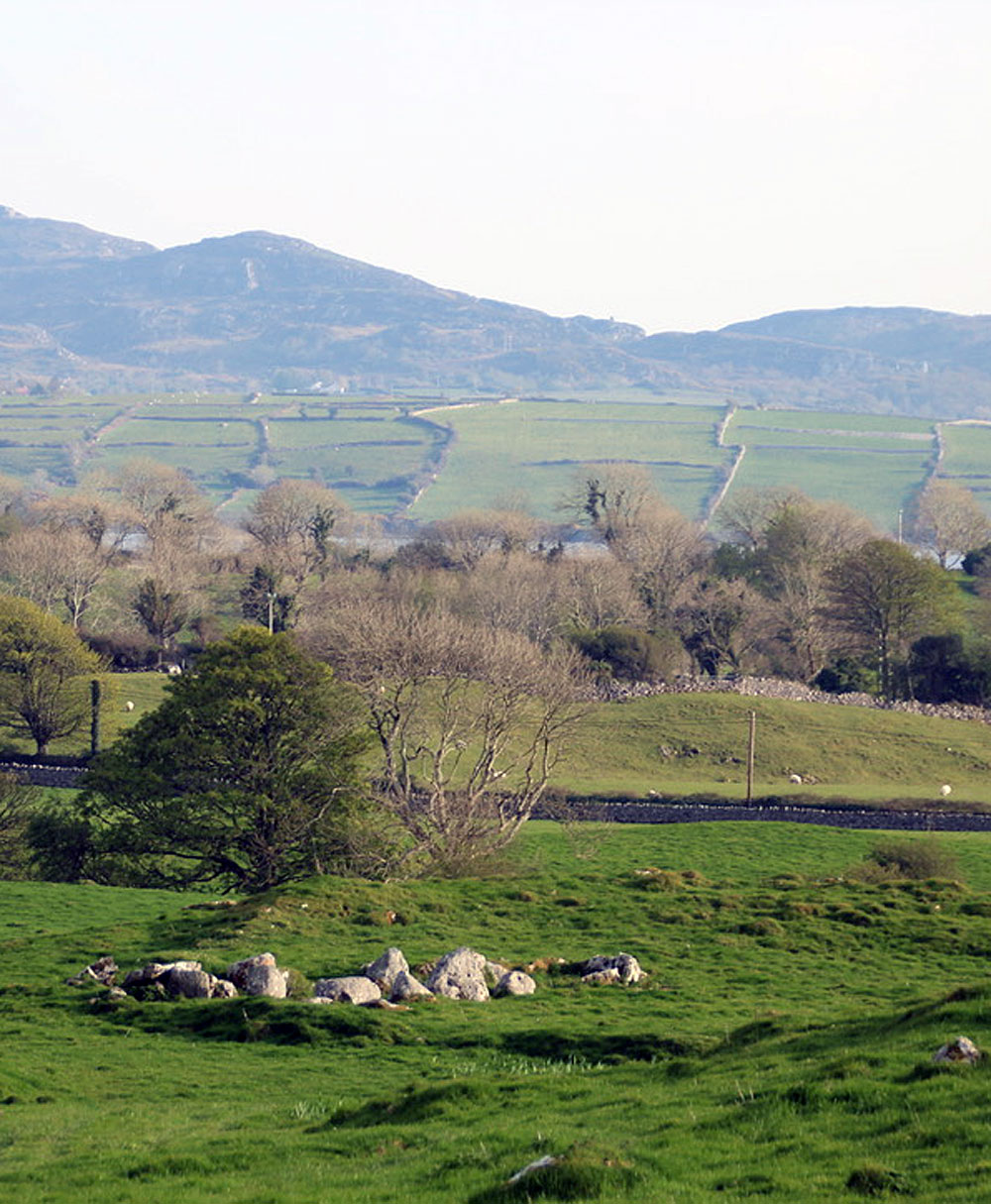
Paleogenomicist Federico Sánchez-Quinto from Uppsala University in Sweden used these techniques on dozens of remains from four megalithic tombs in Ireland, Scotland, and Sweden that were first uncovered years ago. He and his team sequenced the nuclear genomes of those remains—most of which have been dated to between 4500 B.C.E. and 3000 B.C.E.
The remains represented 18 men and six women. When the researchers looked for strings of genetic code that would indicate how closely the buried individuals were related, they found close kinships among men at the Scottish and Swedish sites. And at one of two Irish sites, Primrose Grange on the country’s northwestern coast, at least six of the nine men, who spanned up to 12 generations, shared a genetic variant, suggesting they descended from the same paternal line. One man is likely the father of a 5500-year-old body found at another megalithic site just 2 kilometers to the west.
Some anthropologists think burial in these monumental sites was likely a mark of high social status. The authors argue that, taken together, those results suggest European megalithic societies at the time were patrilineal, with social power invested in the male line across multiple generations, they report today in the Proceedings of the National Academy of Sciences.
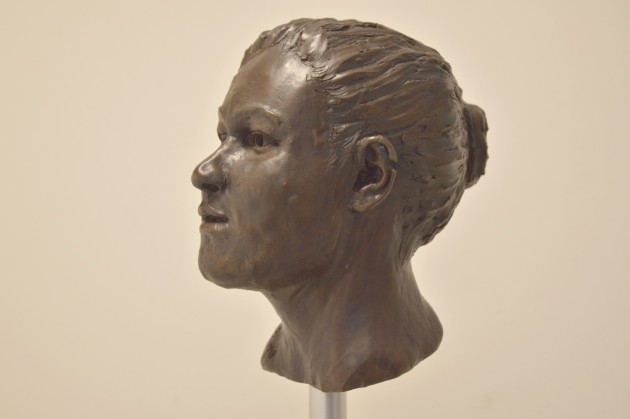
The findings are intriguing, says Thomas Kador, an archaeologist at University College London. He notes that even though men were more commonly interred in these sites, the women there seem to have been given identical burials. That suggests to him that even if these societies were patrilineal, women still played significant roles. Kador’s team has also done a separate genome-wide analysis of ancient individuals at a different megalithic site in Ireland and found a notable lack of close kinship among the buried. It’s possible that different megalithic societies on the island had very different social structures and funerary practices, he says.
Indeed, Robert Hensey, an archaeologist at the National University of Ireland in Galway, warns against drawing such sweeping conclusions about the many and varied Neolithic societies of northern and western Europe from a handful of sites and a few dozen people. “It strains credulity.”

